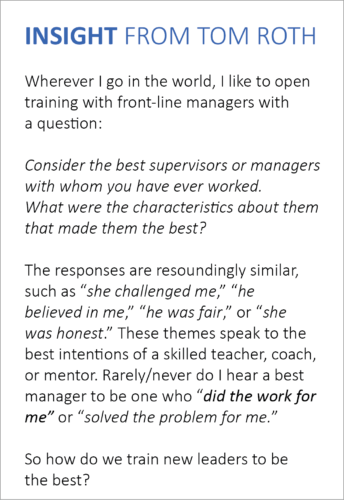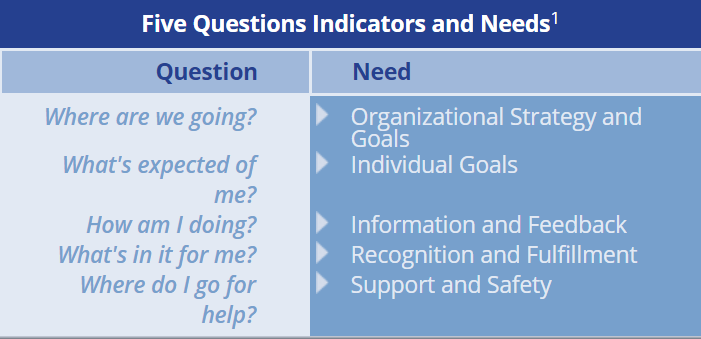It is an interesting career move to go from the individual contributor ladder over to the management ladder. Typically, the reason those tapped to step into leadership is because of their expertise as an individual contributor—they are the high-performers, the top-producers. The move over to the first rung of management can be daunting because now, for the first time for many, the skills of the fittest that ensured their survival at the top are no longer as necessary nor are they sufficient to fit the bill of the expectations surrounding their new role in leadership.
So how important is it that we best equip new leaders with a secure footing as they begin their career in management? Consider the tremendous influence on organizational success this population of front-line managers has as they are closest to the workforce. In many aspects, they are the company to their employees. They are a group that is vitally important, highly visible, and carry a real impact on organizational success or failure. For front-line leaders, not only developing core leadership skills, but also cultivating the “why” they are using those core skills can improve employee retention and engagement, foster positive work relationships, and encourage continuous professional growth.
The Necessary Mindset Shift

Let’s start with the mindset potential of new managers, which in part reverts back to the survival skills that served them well as an individual contributor; this sounds like, “I am in control, I have all the answers, and I need to get the job done. And now, I am being held accountable for the output or productivity of my work unit.”
Can you hear a potential problem with this mindset stepping onto the leadership ladder?
The “manager as doer” is not sustainable because, as a leader, they are often no longer the one who does the producing as they once did as an individual contributor. The fact is, producers have ultimate control over the output and therefore the shift in the leader’s mindset needs to be, “Rather than trying to manage the output, my role is to create the conditions that will influence my direct reports to be more responsible and accountable for the output. My challenge is how to empower my direct reports to believe and behave as if they own their goals, are accountable, and are responsible for achieving organizational goals and strategies.”
As a result, focusing on influencing conditions, instead of trying to control the output, becomes their priority. New skills are needed to empower and unleash people’s energy through providing:
- Clear expectations
- Accurate and relevant information
- Consistent and reliable support
Research suggests that when associates are clear and confident about these conditions, their performance and output increase.
What New Leaders Need to Address with Direct Reports
At a high level, Wilson Learning defines five questions that provide a tactical focus for leaders to address for their associates:
1. “Where Are We Going?”
This question points to the strategy and goals of the organization. Front-line leaders provide the connection from the high level goals and corporate strategy to the work unit level, and what they mean for them.
2. “What’s Expected of Me?”
This question helps the individual understand the goals and objectives for which they will be held accountable. The answer to this question should clearly link how their personal goals support the organizational direction and success.
3. “How Am I Doing?”
This question begs for relevant information and frequent feedback about direct reports’ performance. This question addresses the underlying need for reassurance that they are doing a good job, their work is valuable, and what, if any, adjustments are needed.
4. “What’s In It for Me?”
The answer to this question is about recognition and fulfillment. All associates want to know that their contribution is valued by the organization—and specifically by the manager—since often, the manager is the organization to his or her associates.
5. “Where Do I Go for Help?”
The answer to this question addresses the associate’s need for support and safety. All associates need to know not only where they can go for help if they need it, but also that there are not negative implications in asking for help.
Source for Graphic: Meeting Leadership Challenges: Leading for Performance, Wilson Learning Worldwide Inc.

